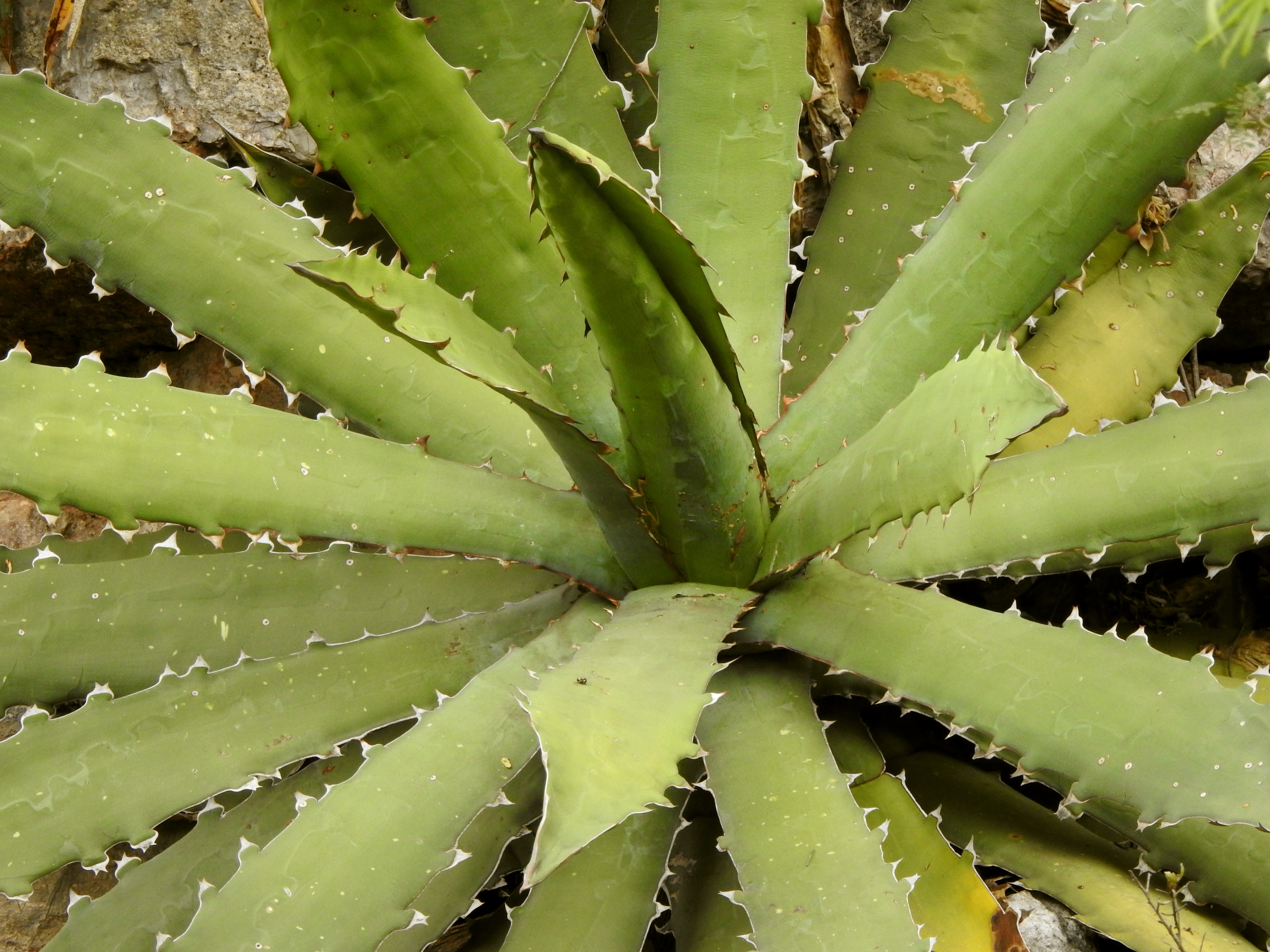Saw Leaf Agave
(Agave xylonacantha)

Description
Agave xylonacantha (Synonyms: Agave amurensis) is a plant species native to Hidalgo, Tamaulipas, Guanajuato and Queretaro in Mexico, but commonly cultivated as an ornamental on other regions. A. xylonacantha is an easy-to-grow member of the genus Agave. The specific epithet 'xylonacantha' means "wood spines". Agave xylonacantha produces a basal rosette of up to 180 cm (6 feet) in diameter. Leaves are sword-shaped, up to 90 cm (3 feet) long and 7.5 cm (3 inches) across, each ending in a spine about 4– 5 cm (1.6-2 inches) long. Margins of the leaves have spines up to 3 cm (1.2 inches) across. This gives the margins an undulating appearance. Flowering stalks can reach a height of 3.3 m (11 feet). Flowers are up to 3.5 cm (1.5 inches) in diameter with greenish tepals. Agave is a genus of monocots native to the hot and arid regions of the Americas, although some Agave species are also native to tropical areas of South America. The genus Agave (from the Ancient Greek αγαυή, agauê) is primarily known for its succulent and xerophytic species that typically form large rosettes of strong, fleshy leaves. Agave now includes species formerly placed in a number of other genera, such as Manfreda, ×Mangave, Polianthes and Prochnyanthes. Many plants in this genus may be considered perennial, because they require several to many years to mature and flower. However, most Agave species are more accurately described as monocarpic rosettes or multiannuals, since each individual rosette flowers only once and then dies; a small number of Agave species are polycarpic. Maguey flowers are considered edible in many indigenous culinary traditions of Mesoamerica. Along with plants from the closely related genera Yucca, Hesperoyucca, and Hesperaloe, various Agave species are popular ornamental plants in hot, dry climates, as they require very little supplemental water to survive. Most Agave species grow very slowly. Some Agave species are known by the common name "century plant". The succulent leaves of most Agave species have sharp marginal teeth, an extremely sharp terminal spine, and are very fibrous inside. The stout stem is usually extremely short, which may make the plant appear as though it is stemless.
Taxonomic tree:







